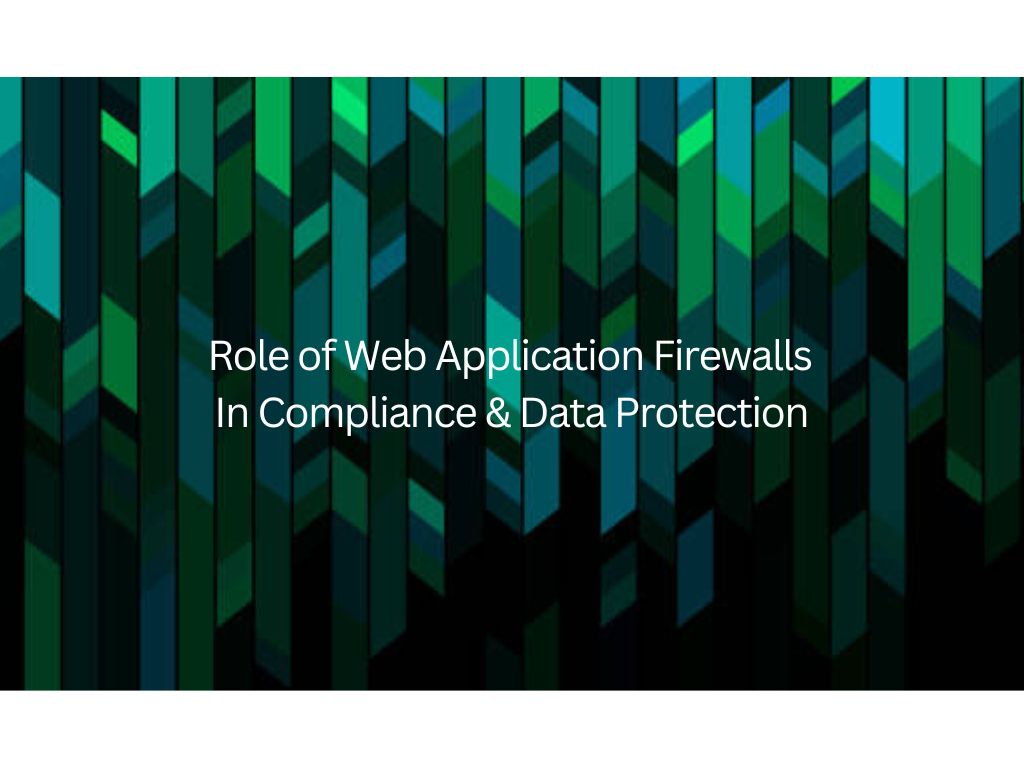In today’s digital landscape, compliance with data protection regulations is of utmost importance for organizations. Web application firewalls (WAFs) play a critical role in ensuring compliance by providing robust security measures for web applications. In this blog post, we will delve into the role of web application firewalls in compliance and data protection, highlighting their significance in safeguarding sensitive information and meeting regulatory requirements.
- Protecting Data and Confidentiality:
Data protection is a key aspect of compliance with regulations such as the General Data Protection Regulation (GDPR) and the California Consumer Privacy Act (CCPA). Web application firewalls act as a protective barrier between users and web applications, safeguarding sensitive data from unauthorized access. By inspecting incoming and outgoing traffic, WAFs can identify and block malicious attempts to steal or compromise data, ensuring confidentiality and preserving the privacy of users’ information. - Preventing Data Breaches and Attacks:
Data breaches can have severe consequences, leading to financial losses, reputational damage, and legal liabilities. Web application firewalls help prevent such breaches by detecting and blocking attacks targeting web applications. By analyzing traffic patterns, monitoring for suspicious activities, and applying security rules, WAFs can mitigate common attack vectors like SQL injection, cross-site scripting (XSS), and distributed denial-of-service (DDoS) attacks. By proactively defending against these threats, WAFs reduce the risk of data breaches and enhance overall cybersecurity posture. - Meeting Regulatory Requirements:
Compliance with data protection regulations is a legal obligation for organizations operating in various industries. Web application firewalls play a vital role in meeting these requirements. For example, the Payment Card Industry Data Security Standard (PCI DSS) mandates the use of WAFs to protect cardholder data. Similarly, other regulations like HIPAA (Health Insurance Portability and Accountability Act) and SOX (Sarbanes-Oxley Act) require robust security measures for safeguarding sensitive data. By implementing and maintaining a WAF, organizations can demonstrate their commitment to compliance and reduce the risk of penalties or legal consequences. - Detecting and Preventing Web Application Vulnerabilities:
Web applications are prone to vulnerabilities that can be exploited by attackers. Web application firewalls actively identify and block such vulnerabilities, minimizing the risk of exploitation. By regularly updating security rules and monitoring for emerging threats, WAFs can mitigate risks associated with common vulnerabilities, such as outdated software components, insecure coding practices, and misconfigurations. By providing virtual patches and blocking malicious requests, WAFs act as an additional layer of defense, protecting web applications from potential exploitation and ensuring their integrity. - Enhancing Incident Response Capabilities:
In the event of a security incident or breach, web application firewalls serve a crucial role in incident response. By logging and analyzing traffic, WAFs provide valuable insights into the nature and scope of an attack. This information helps organizations understand the incident, assess the impact, and take appropriate actions to contain and mitigate the threat. Additionally, WAFs can generate real-time alerts and notifications, enabling security teams to respond swiftly to potential threats. By strengthening incident response capabilities, WAFs contribute to effective security incident management and minimize the impact of security breaches. - Continual Monitoring and Risk Mitigation:
Compliance is not a one-time accomplishment but an ongoing process. Web application firewalls facilitate continuous monitoring and risk mitigation to maintain compliance and data protection. By monitoring web application traffic, analyzing logs, and generating reports, WAFs provide valuable insights into potential security risks and areas that require attention. Regular audits and updates of WAF configurations ensure that security measures align with changing compliance standards and evolving threat landscapes. Through proactive risk mitigation and continuous improvement, WAFs help organizations stay compliant and resilient against emerging threats.
Conclusion:
Web application firewalls play a crucial role in compliance and data protection by safeguarding sensitive information, preventing data breaches, meeting regulatory requirements, detecting vulnerabilities, enhancing incident response capabilities, and facilitating continual monitoring and risk mitigation. By incorporating a robust web application firewall into their cybersecurity strategy, organizations can effectively protect data, maintain compliance, and establish trust with their customers and stakeholders in an ever-evolving digital landscape.




